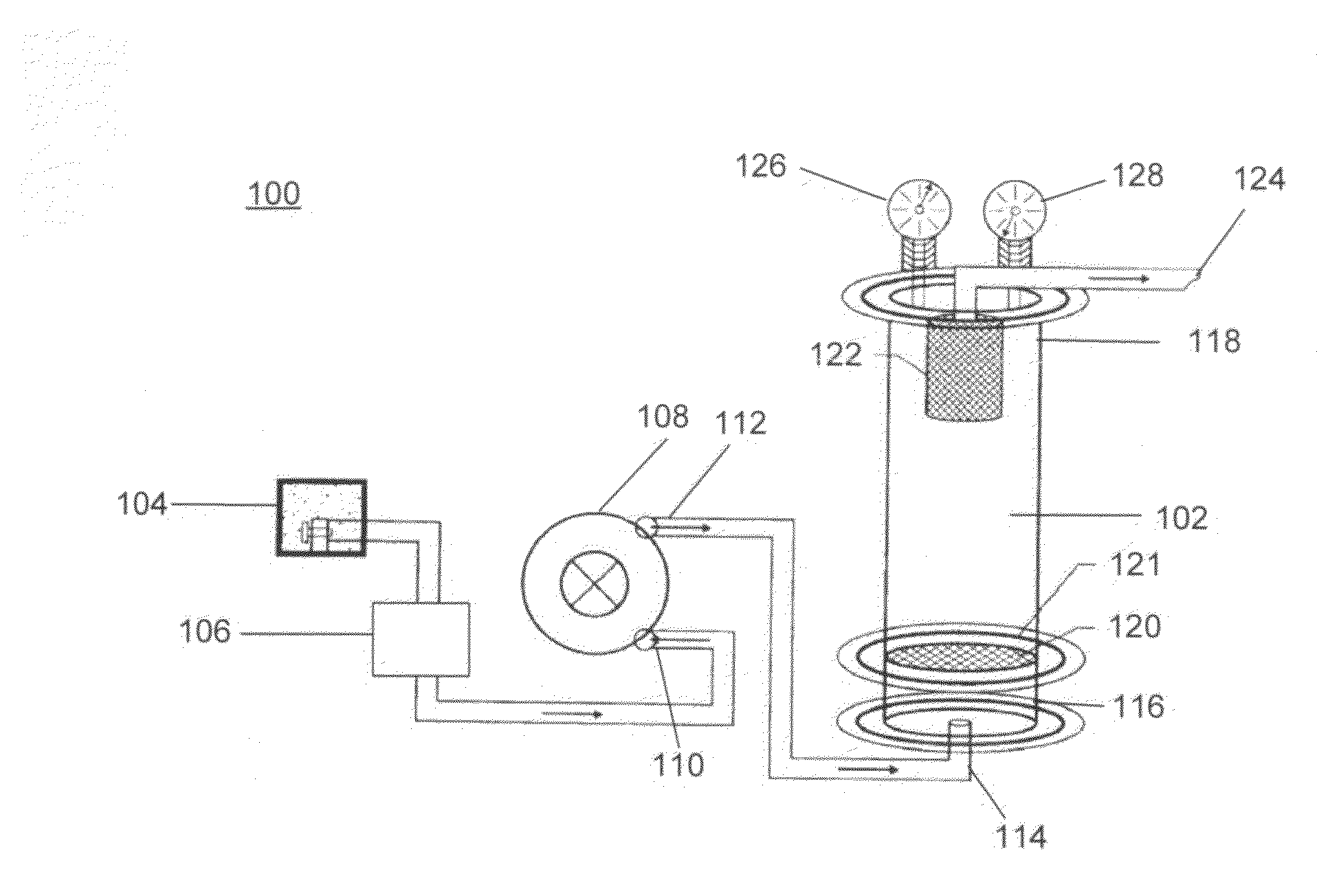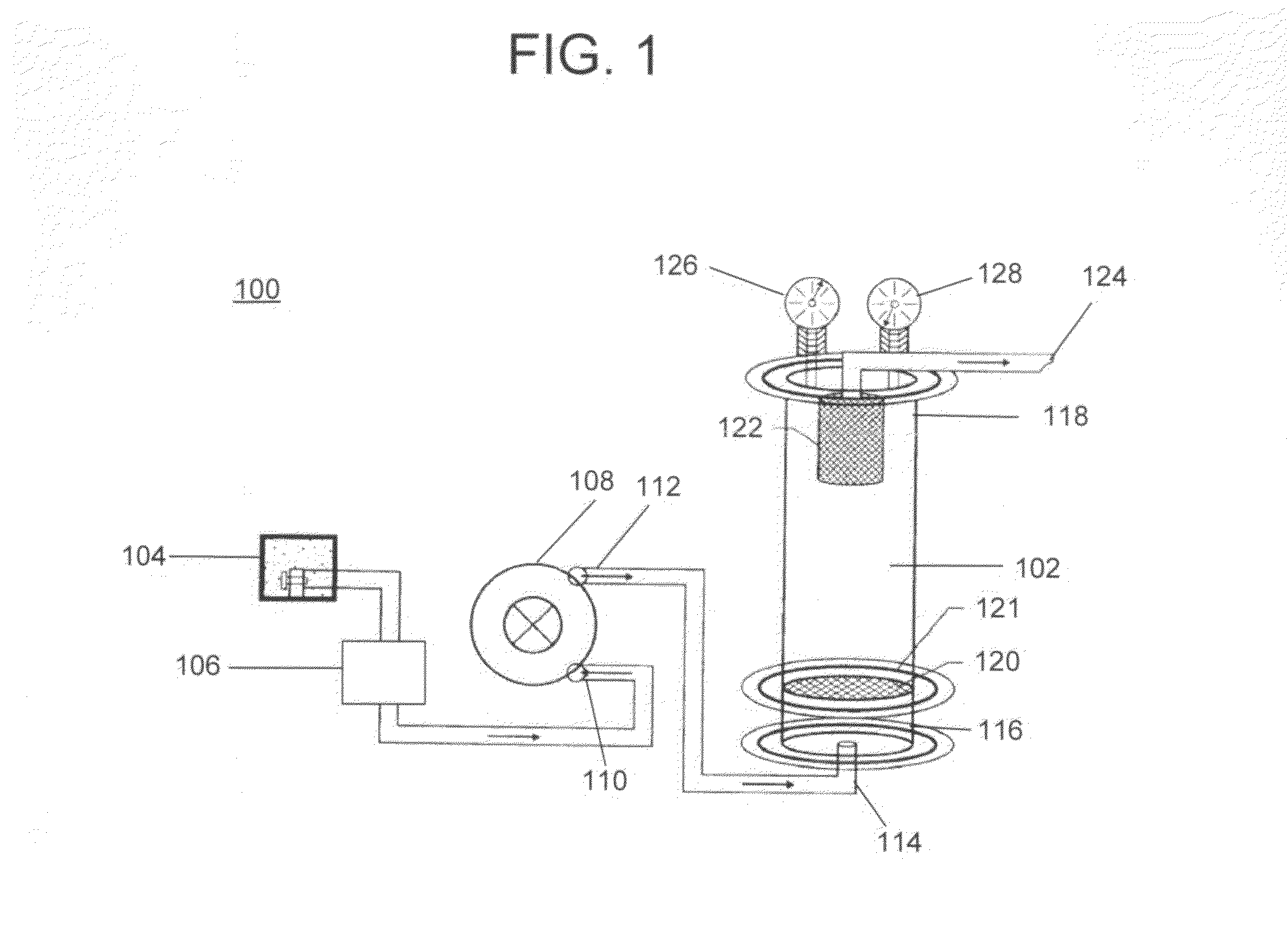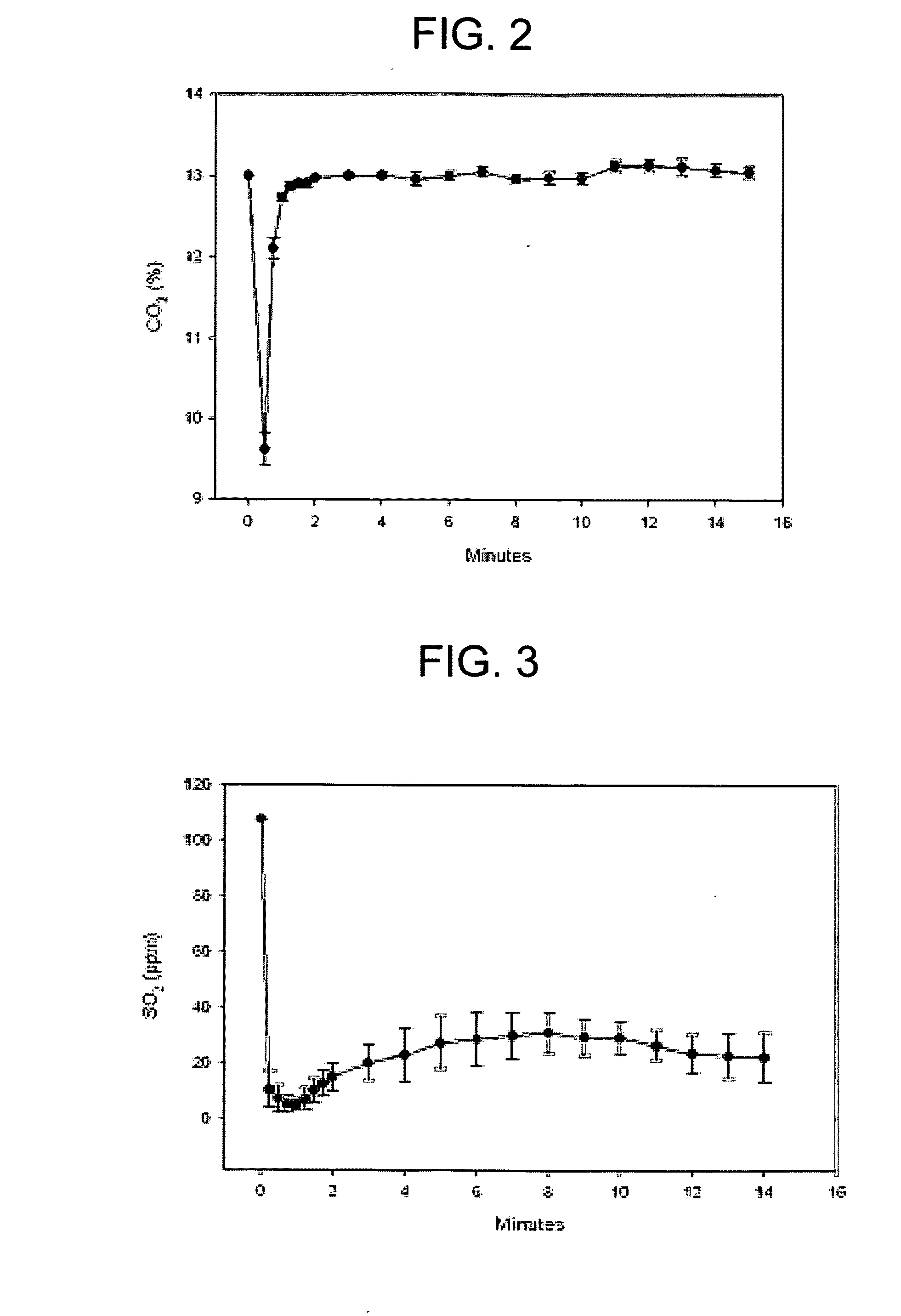Apparatus and method to sequester contaminants
a technology of apparatus and contaminants, applied in the field of apparatus and methods to sequester contaminants, can solve the problems of inconvenient implementation of mineral carbonation process, inconvenient retrofitting, and inability to meet the practical use of widespread use, and achieves low energy consumption, easy retrofitting, and rapid mass transfer rate
- Summary
- Abstract
- Description
- Claims
- Application Information
AI Technical Summary
Benefits of technology
Problems solved by technology
Method used
Image
Examples
examples
[0068]Experiments were conducted at the Jim Bridger Power Plant, Point of Rocks, Wyo., where about 30 million kilograms of coal is burned daily using four units to produce about 2240 MW of electricity and serving 6 states in the western United States. All experiments were conducted on unit two at approximately 30 m above ground near the flue gas stack.
[0069]The fly ash samples were analyzed for particle size, moisture content, surface area, calcium carbonate content, major mineral phases and surface morphology. Fly ash particle size was estimated using a scanning electron microscope (SEM; JOEL JSM-5800LV). Moisture content of the fly ash was measured by heating samples to about 100° C. in a drying oven (Sargent Analytical Oven) and calculating the difference in mass before and after heating. The surface area of the fly ash was calculated from BET-isotherms. To measure percent calcium carbonate in the fly ash samples, a CO2 coulometer (Coulometrics, Inc. Model 5010) was used to measu...
experiment 1
[0080]In Experiment 1, CO2 and SO2 were simultaneously sequestered from the flue gas of the coal fired plant. A fluidized bed reactor as described in the Example section was used. About 23 kg of fly ash having the chemical properties as described in Table 4 was loaded in the reactor. The reactor was run for about 2 hours and samples of fly ash were taken at 2, 8, 15, 30, 45, 60, 75, and 120 minutes. The chemical properties of the flue gas are also described in Table 4.
[0081]FIG. 2 is a graphical representation of carbon dioxide sequestering via Experiment 1. Referring to FIG. 2, the y-axis is the percentage concentration of carbon dioxide gas and the x-axis is the reaction time in minutes. As shown in FIG. 2, the average CO2 concentration decreased from about 13.0% to about 9.6% by reacting with the fly ash during the first minutes of the reaction.
[0082]FIG. 3 is a graphical representation of sulfur dioxide sequestrating via Experiment 1. Referring to FIG. 3, the y-axis represents c...
experiment 2
[0086]In this Experiment 2, CO2 and SO2 were simultaneously sequestered from the flue gas of the coal fired plant. A fluidized bed reactor as described in Experiment 1 was used. About 23 kg of fly ash having the chemical properties as described in Table 4 was loaded in the reactor, the reaction was run for 2 hours. A sample of reacted fly ash was taken at about 2 minutes. The chemical properties of the flue gas and fly ash are described in Table 4.
[0087]FIG. 5A is a SEM photomicrograph of fly ash prior to reaction in Experiment 2. FIG. 5B is an EDS spectra of fly ash prior to reaction in Experiment 2. Referring to FIGS. 5A and 5B, a fly ash sample was taken at location 502 and an EDS spectra was run on the sample. Table 5 below illustrates a mass percent of the control sample shown in FIGS. 5A and 5B.
TABLE 5Composition of Fly Ash (Control Sample)OFe[massNaAlSiKCa[mass%][mass %][mass %][mass %][mass %][mass %]%]59.084.4314.5016.71.560.862.8
[0088]FIG. 5C is a SEM photomicrograph of fl...
PUM
| Property | Measurement | Unit |
|---|---|---|
| Temperature | aaaaa | aaaaa |
| Temperature | aaaaa | aaaaa |
| Fraction | aaaaa | aaaaa |
Abstract
Description
Claims
Application Information
 Login to View More
Login to View More - R&D
- Intellectual Property
- Life Sciences
- Materials
- Tech Scout
- Unparalleled Data Quality
- Higher Quality Content
- 60% Fewer Hallucinations
Browse by: Latest US Patents, China's latest patents, Technical Efficacy Thesaurus, Application Domain, Technology Topic, Popular Technical Reports.
© 2025 PatSnap. All rights reserved.Legal|Privacy policy|Modern Slavery Act Transparency Statement|Sitemap|About US| Contact US: help@patsnap.com



